TERRA ALTA
Terra Alta is a permaculture design education centre on two hectares of land nestled in the foothills of Sintra Mountains. A dusty dirt path leads us downhill, out of the tiny Portuguese village of Ulgueira. The sun’s sweltering rays beat down on the Iberian landscape while the last sips of water splash around at the bottom of our bottle. The Atlantic Coast is clearly recognisable only a few kilometres further on the horizon—reassurance that we are headed in the right direction. Hidden around a bend, behind a dense cluster of cane, a sturdy wooden gate marks the entrance to Terra Alta. The property is not that hard to find, and yet somehow still easy to miss. We lift the latch and enter into a world very different from that as we know it.
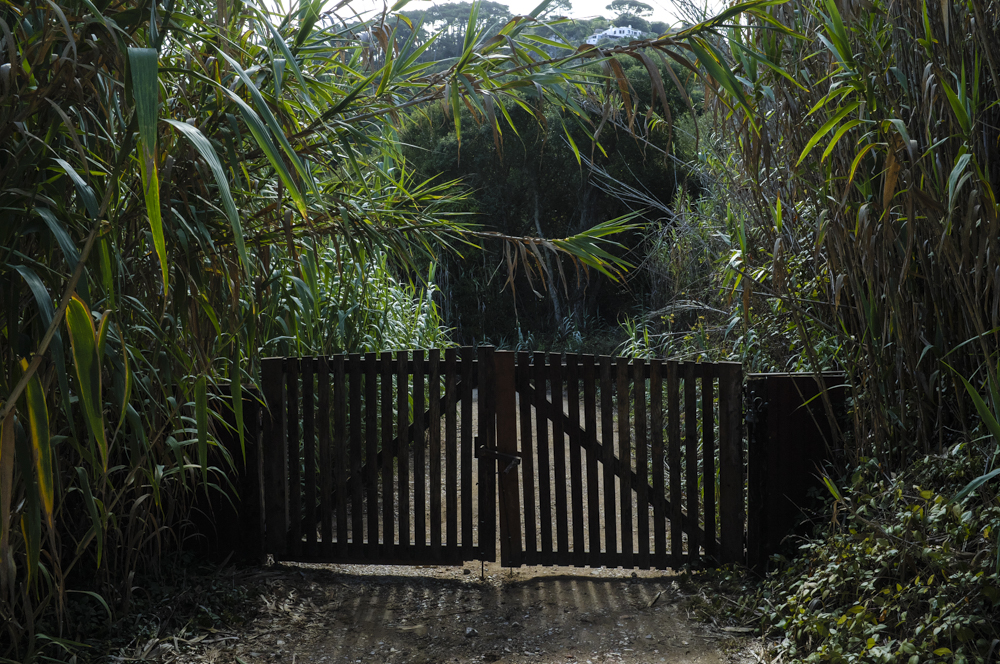
The first sign of life we encounter upon setting foot on the property is an interesting-looking house to our left that appears to be a fusion of an Earthship and a wooden cabin. Organically shaped window panes and an earthy-white exterior fuse in naturally with their surroundings. Continuing along, we come across a thriving tomato patch alongside a series of other vegetable beds. A woman walks between the stalks taking notes while a handful of individuals move silently between the beds harvesting greenery. We ask for Pedro Valdjiu and learn that he was only just spotted tinkering in the shed. Arriving at what appears to be the heart of the project we are astonished by the scene that greets us—a circular fire pit under towering clusters of cypress grass, a light-flooded research centre made almost entirely of glass, a tiny tea house perched up on a hill, an open kitchen built from impressive wooden beams, a cob-oven in-the-making. It’s hard to believe that this astonishingly large sanctuary, clearly the work of countless hours of love and labour, is so well-hidden in this valley.
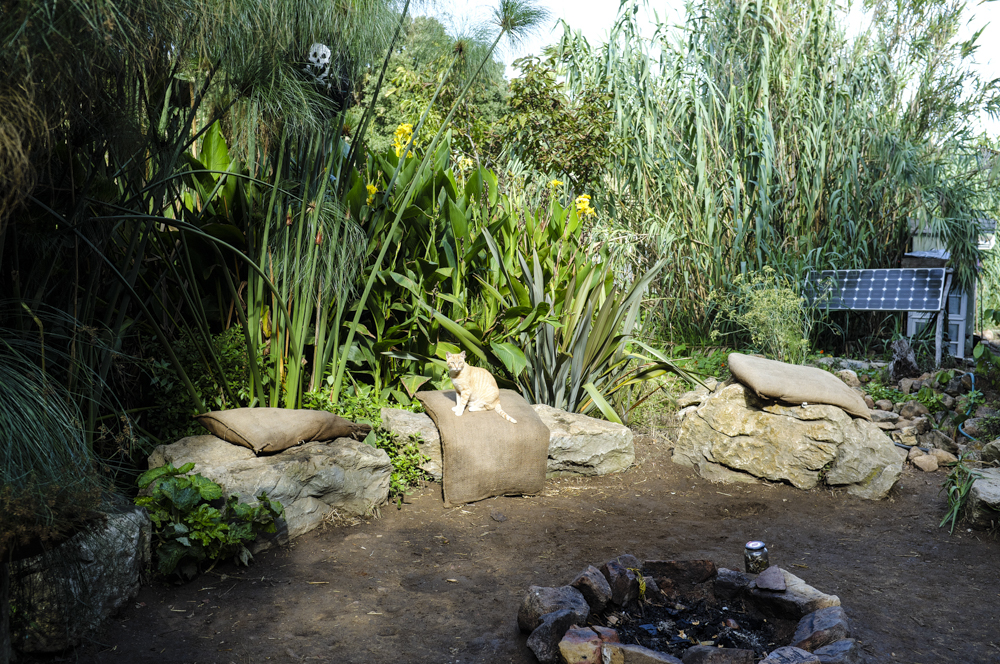

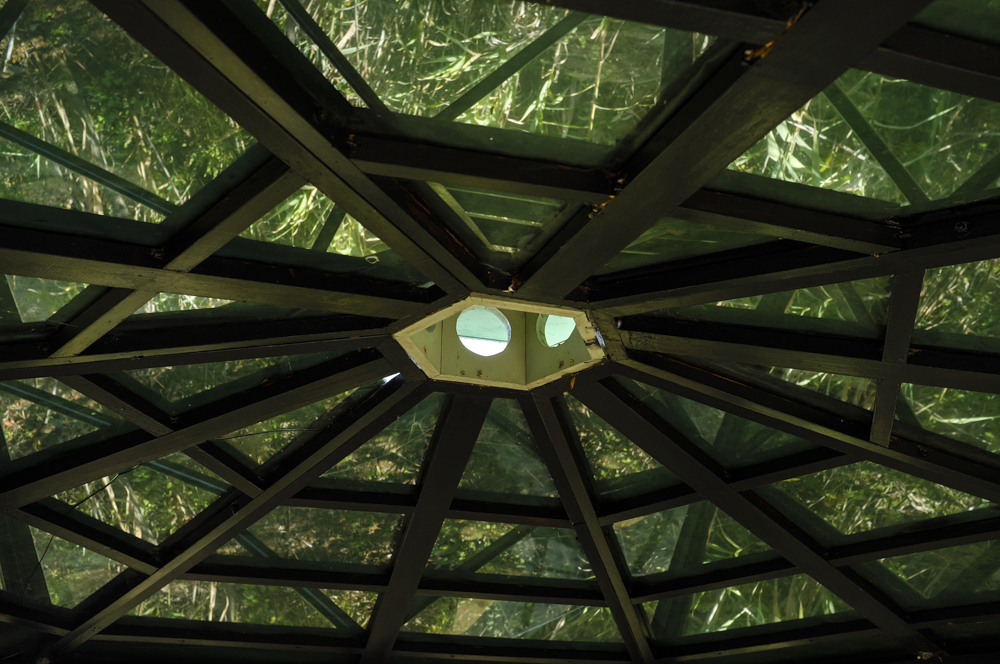
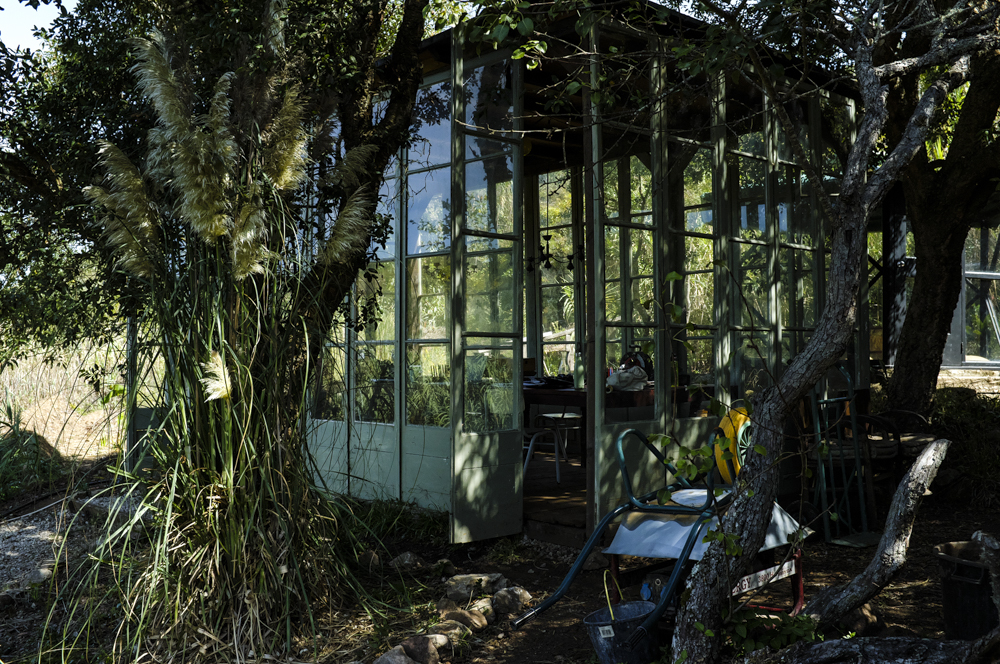
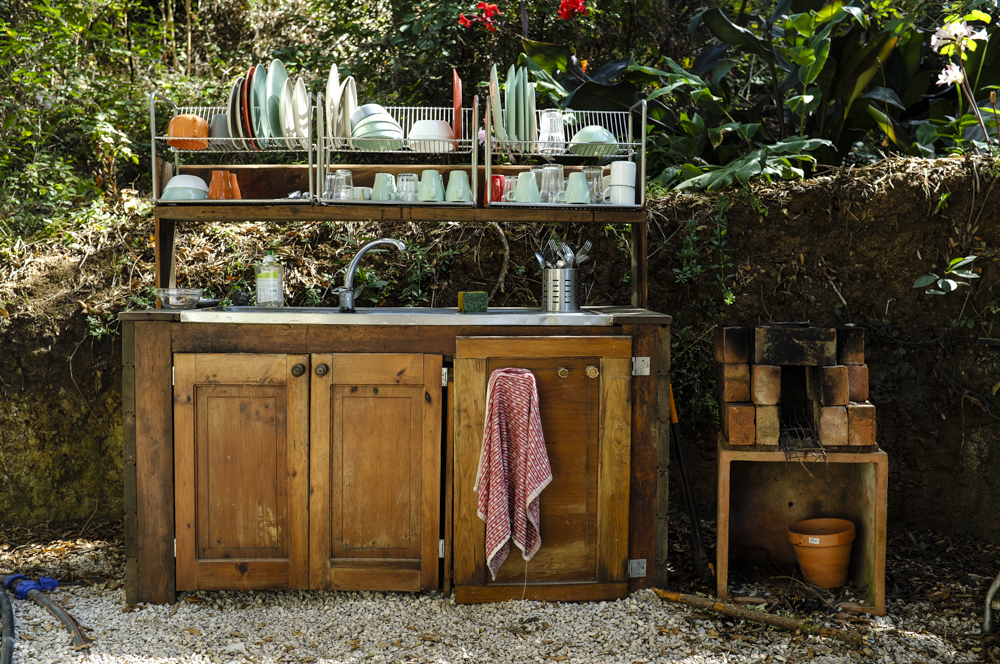
Pedro receives us with a smile that stretches for miles. The host sets down his tools and heartily welcomes us to his property. After brief introductions to some of the volunteers, he gives us a personal tour of the rest of the grounds. We wander through Terra Alta’s young food forest and admire layer upon layer of fruit-bearing flora of all shapes and sizes. Enroute, Pedro points out cork oak tree after cork oak tree, or as he so poetically describes them “the original inhabitants of this ancient land”. Beaming with pride, he guides us onward to the project’s educational centre—the Star Dome. With its strong bamboo frame and fabulous pentagram skylight, the energy of this space calls thirsty minds to open their hearts to new ideas and concepts. Tracing back to the other side of the property we are delighted to discover the campsite which, as of this year, includes an adorable collection of bell tents. A compost toilet house completes the picture of off-the-grid living. Further north, Pedro explains his vision for a mandala keyhole garden, which is very much in the works, yet currently still in its early experimental stages.
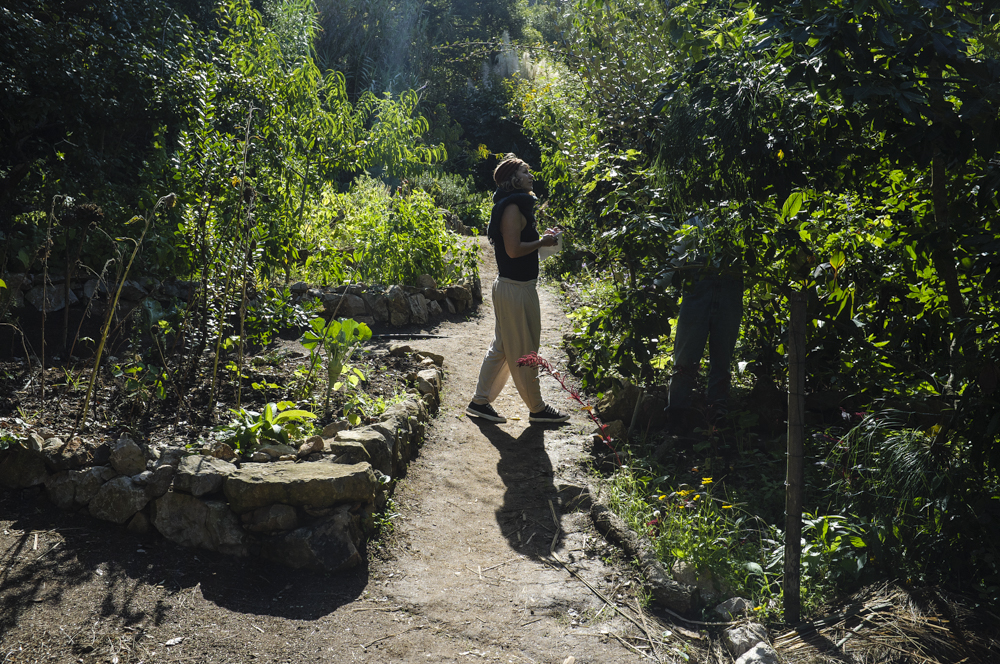

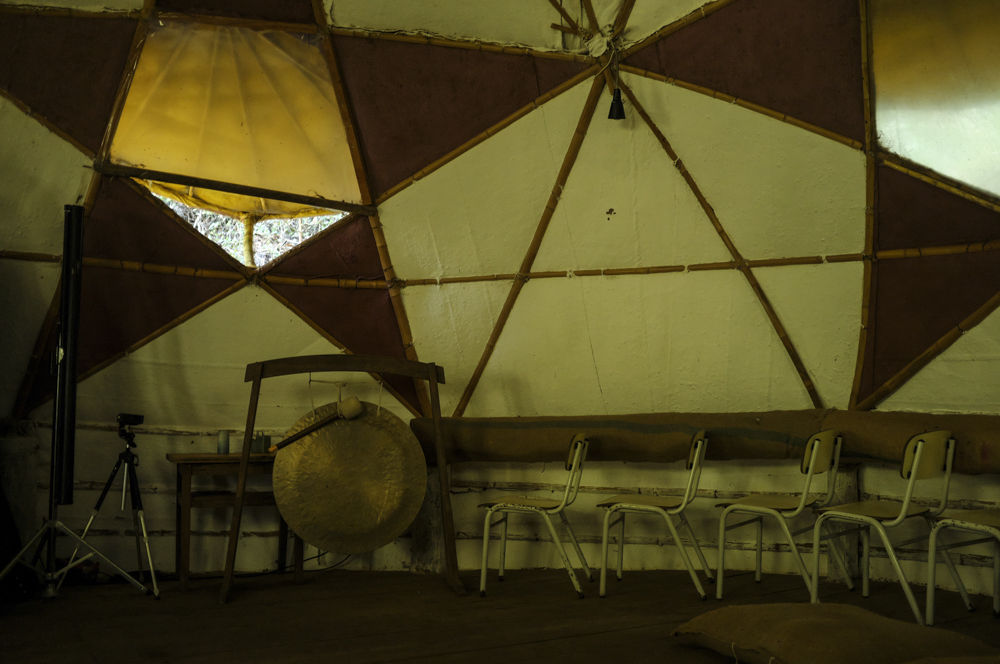

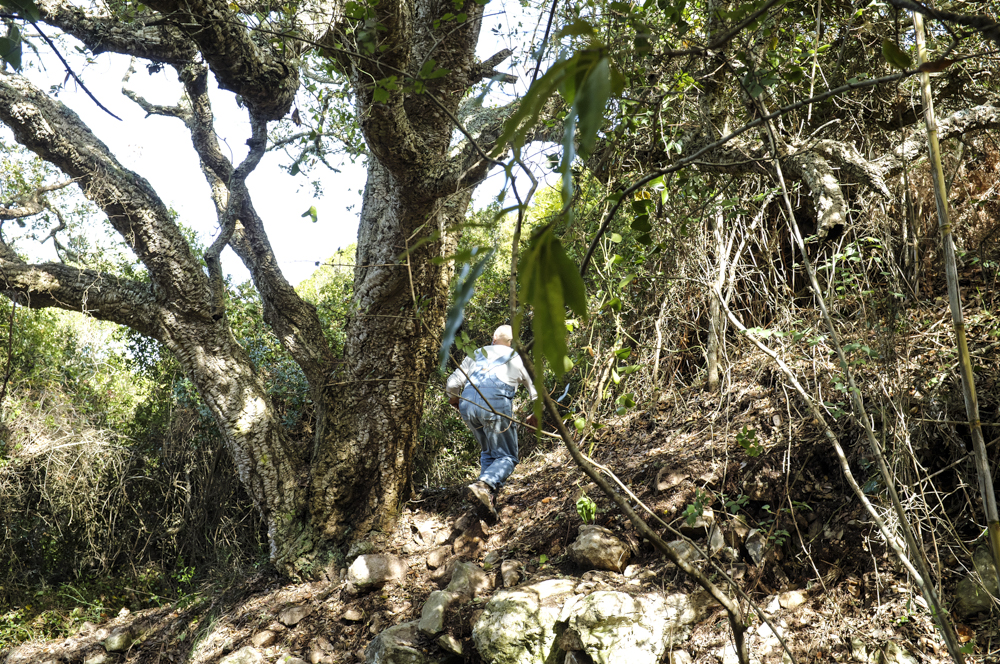


But how did all of these impressive constructs and productive landscapes spring from the scenery? And what purpose do they serve? Pedro and his life partner, Rita, have created a fascinating model for regenerative culture together. While Pedro takes the lead in seeing to Terra Alta’s day-to-day business, Rita focuses more of her time to running Escola da Terra—the Waldorf school that the duo co-founded in Sintra in 2008. Their core team also includes his neighbour, Henrik Ellerbrock, who works as a facilitator and runs a local market garden business called Chão Rico. From the very start, the trio’s work has been continuously supported by a rotation of volunteers. This list of dedicated individuals most recently includes Nadia (Communications Coordinator), Steve (Natural Builder), Darby (Project & Research Coordinator), and Michelle (Market Garden Caretaker).
Since its founding in 2010, Terra Alta has evolved into an inclusive learning centre that offers a fascinating mix of permaculture design courses, apprenticeships, and nature retreats. Participants from all corners of the globe are invited to embark on unique journeys of learning and discovery. Individuals thus become part of an ever-growing community that is looking for new ways forward. Ultimately, Terra Alta ignites cultural, land, and social transformation on an international scale.
Rooted in Observation
After Pedro and Rita first purchased the land in 2009, he dedicated his first year almost entirely to observation. He watched the water, carefully observing its natural flow in everything from downpours to dry spells. He took notes on the trees as they budded and shed their leaves, scrutinised shrubs as they flowered and wilted. He familiarised himself with the communities of birds and insects inhabiting the area, carrying out their roles in the ecosystem. Pedro explains his reasoning for this methodology, “Permaculture is a lot about designing perennial systems that we, as humans, are also a part of. When we approach a piece of land, the land already carries a unique story. So it’s very important that we connect to what the land wants from us as humans. Although we are perennial, like trees, our life is quite limited compared to the lifespans of the trees that are where we stand.”

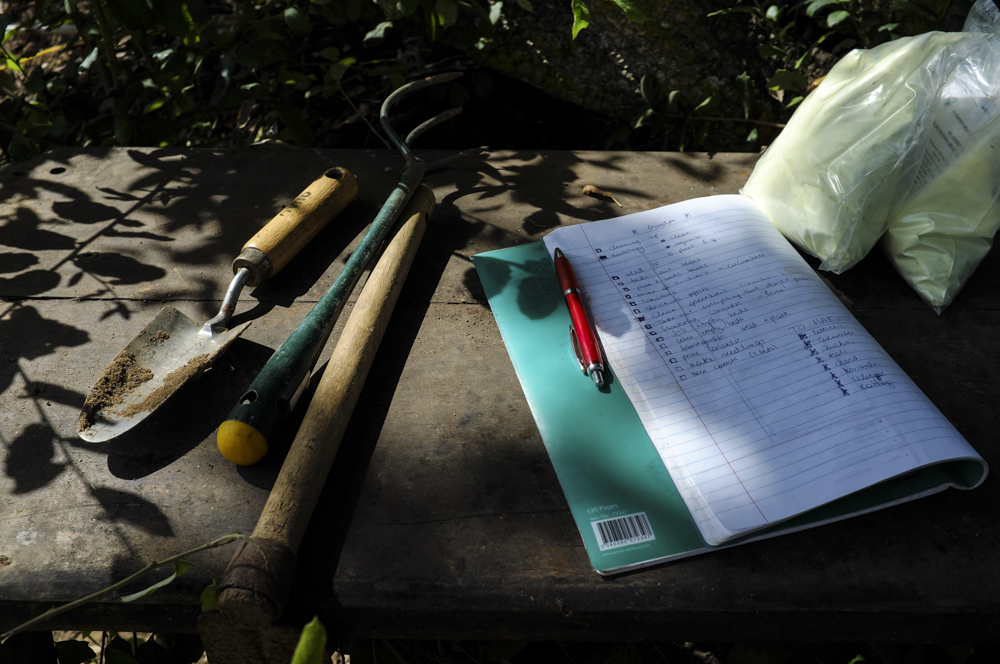

Yearning to retrace the land’s footsteps, Pedro delved into countless books in Sintra’s library. He was delighted to find that the region’s history had been safe-kept for hundreds of years. Equally intrigued by storytelling, he spoke with locals to understand what knowledge about the region had been passed down for generations. “I could see that this place was where the three main religions had been trying to build communities for over 200 years. And I think this is a really important factor. As human beings, we do not really represent religions anymore, but instead cultural backgrounds and belief systems based on things like economy and culture. This is now the same place, just without the religious flair.” Today, Pedro welcomes around 100 different people annually to reconnect with nature at Terra Alta.
Throughout this process, he was also guided by internal observation. “I was trying to use my intuition and my imagination to get in contact with this realm of existence in this invisible world. I kept asking the question ‘What do you really want me to do here?’. And the images that I received were actually connected to what we are doing now. So I am following this vision of creating a model that could inspire people not to be self-sufficient, but to be self-reliant.”
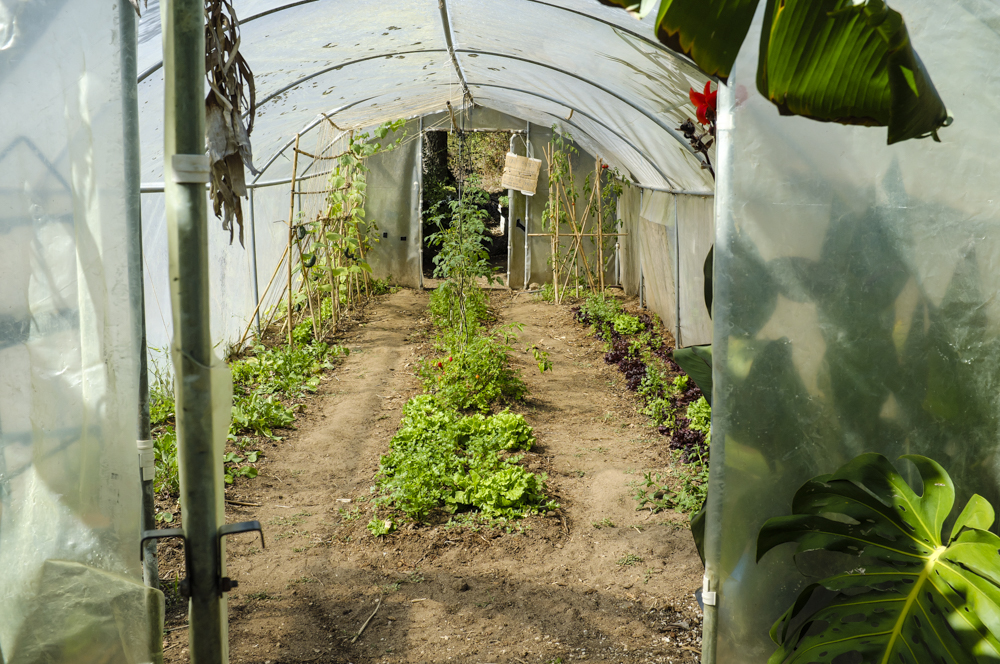
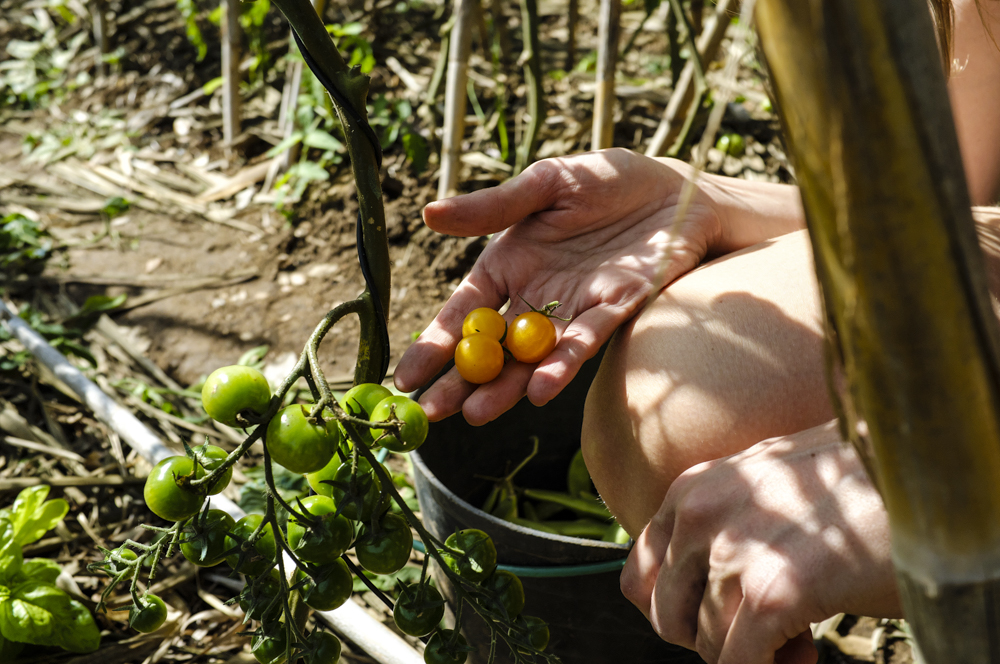
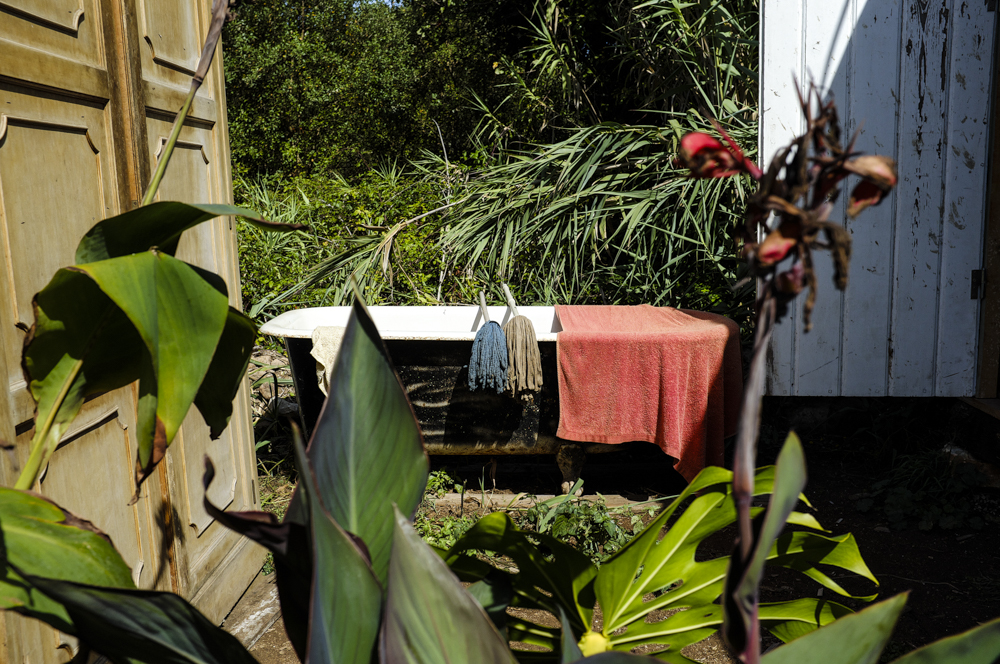
Working with Permaculture Principles
To better understand the dynamic nature and ethos of Terra Alta, it is important to have a basic understanding of the Ethics of Permaculture, the 12 Permaculture Design Principles (PDPs) and the Flower of Permaculture. These are briefly illustrated in the visuals below:
The 12 Permaculture Design Principles
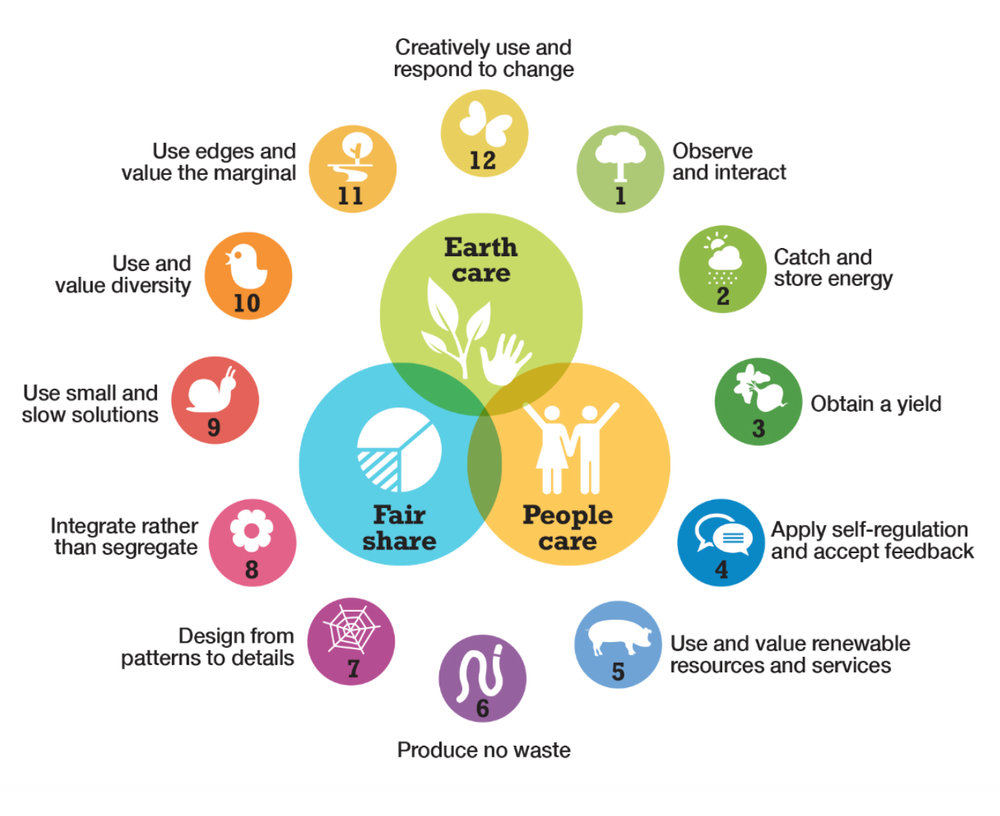
Illustration courtesy of barefootsolutions.com
The term “permaculture” is a portmanteau of the words “permanent” and “agriculture”. Centralised around the ethical practices of Earth Care, People Share, Fair Care, these 12 design principles act as universal guidelines for practitioners. They make up the core of the Permaculture Flower, and can be applied in any setting. The seven petals of the Permaculture Flower visualise the seven domains necessary for the creation of a sustainable culture. The spiral leading from outward from the centre of the flower represents permaculture’s evolutionary path. Starting at a personal level it moves to activities on a local, a collective, and finally a global scale.
The Flower of Permaculture
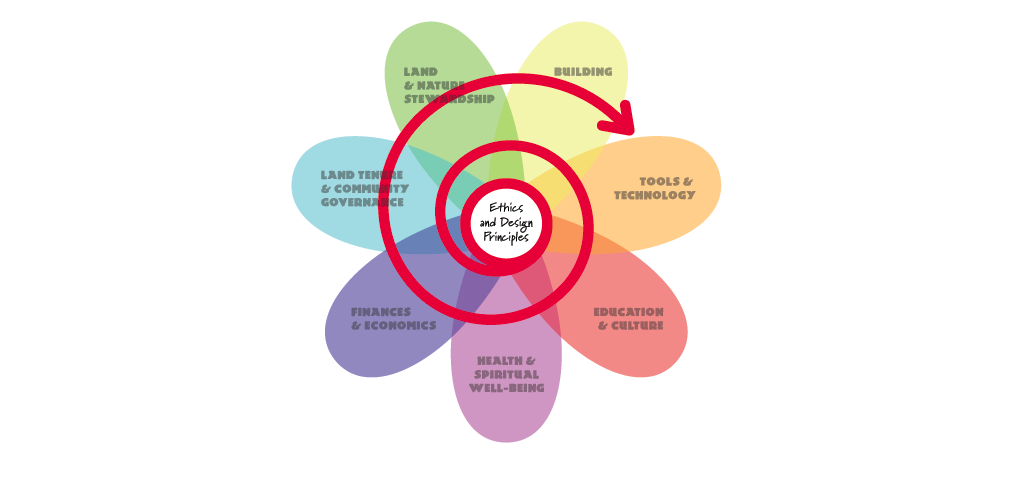 Illustration courtesy of permacultureprinciples.com
Illustration courtesy of permacultureprinciples.comBill Mollison and David Holmgren are often seen as the ‘fathers’ of Permaculture. Their teachings form the basis for Terra Alta’s educational programmes. Pedro explains his reasoning for choosing to follow this pattern. “Each and every one of us brings a skill [to the table]. We are, at the very least, dreaming that we have a gift to bring to this planet. And the flower contains this possibility. Because the Flower of Permaculture is really a culture based on economics, government, building, technology, spirituality, land, and nature stewardship. So whatever your background is, when you enter into this new kind of language, you are not going to suffer from anxiety. You are already welcome. And from here, you can research what it is that you want to do. This project is based on trial and error. Most of the things I share in my classes as a facilitator, we have tested.” Thus, from Permaculture Design to soil regeneration, natural building to the creation of autonomous energy sources, these principles and domains are reflected in all of Terra Alta’s endeavours.






Building Soil
In recent years Terra Alta has been invested, not only in regenerating the soil but also in building soil. Through testing different concepts, such as creating compost piles or multiple layers via lasagna gardening, the project continues to deepen its understanding of soil’s food web, thereby strengthening its relationship to the land and opening up exciting new possibilities. Pedro elaborates, “Agriculture is not about farming food, it’s about building soil. The word ‘agri’ means ‘soil’ in Latin. And so building soil is like a revolution. Internationally, we are losing soil every day due to erosion and bad practices. We have very heavy clay soil at Terra Alta, so in addition to using cardboard and mulch, we also use sand. We work on texture, but we also work on the soil’s food web. This is something quite new to soil science. There is a web of organisms from the sun to the trees to the fungi to the birds to the shredders to the insects, microbes, bacteria...They are all interconnected. And if you take one, the community dies. Soil is very fragile.”
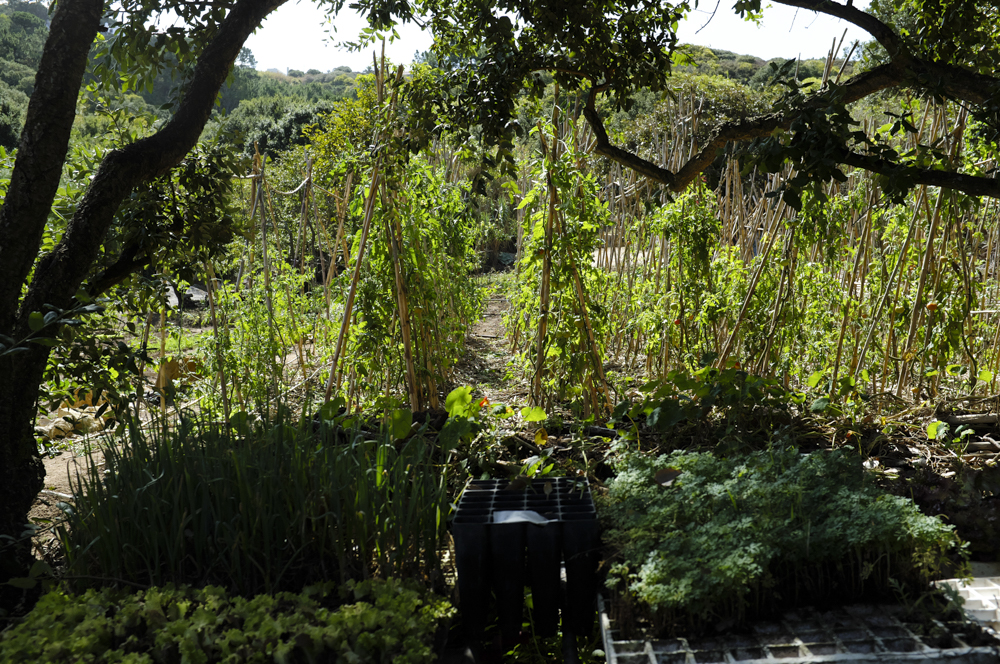

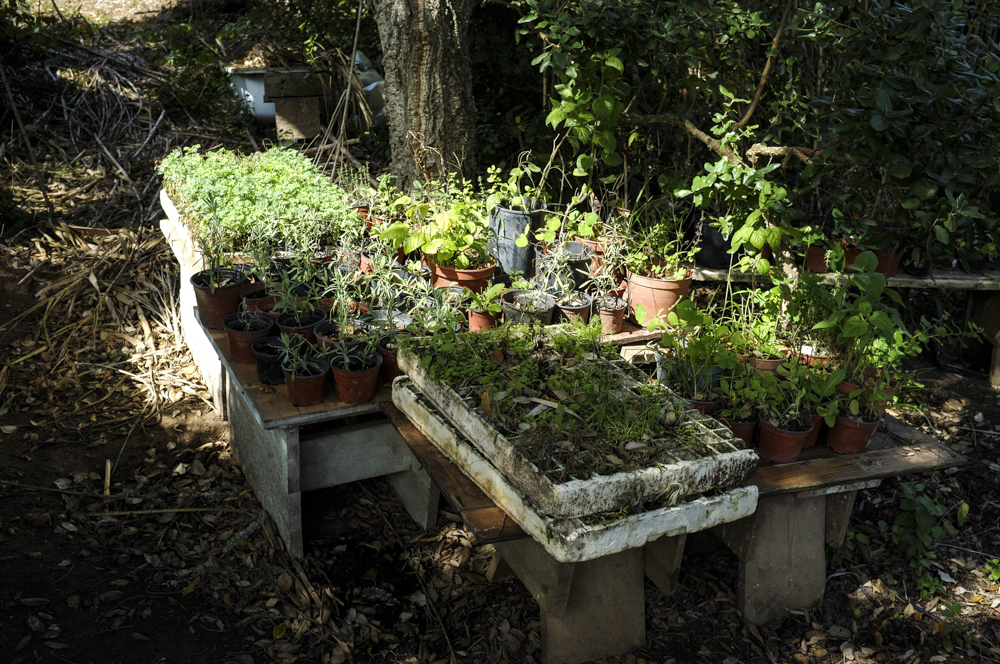
Growing a Community, Propagating Pollinators & Fostering Culture
Pedro was not always one to welcome the outside world into his environment. “When I started this project, I wanted to save myself from the world. It was an individual impulse. And then I realised that, as time went on, I was actually opening myself up and letting the world in. So I started to dance with this idea. And this was unexpected for me. I’ve become a person who really enjoys hosting and sharing what I’ve learned.” Embracing his newfound willingness to share is journey with wider audiences, Pedro has expanded Terra Alta’s programmes over the years. Today, the project offers a delightful mix of Permaculture Design courses, apprenticeships and nature retreats.
Reflecting on Terra Alta’s diverse, international community, he makes some interesting observations. “The community of people that surrounds this project is made up of people that are actually doing things, and not just exploring theories. Nevertheless, what I also see when looking at the profile of people who want to connect with the earth is that these are often not exactly people that own a lot of land. Sometimes they don’t own anything or don’t even have access to a piece of land.” But this is not stopping these individuals from flocking to Portugal to participate in his programmes. On the contrary.



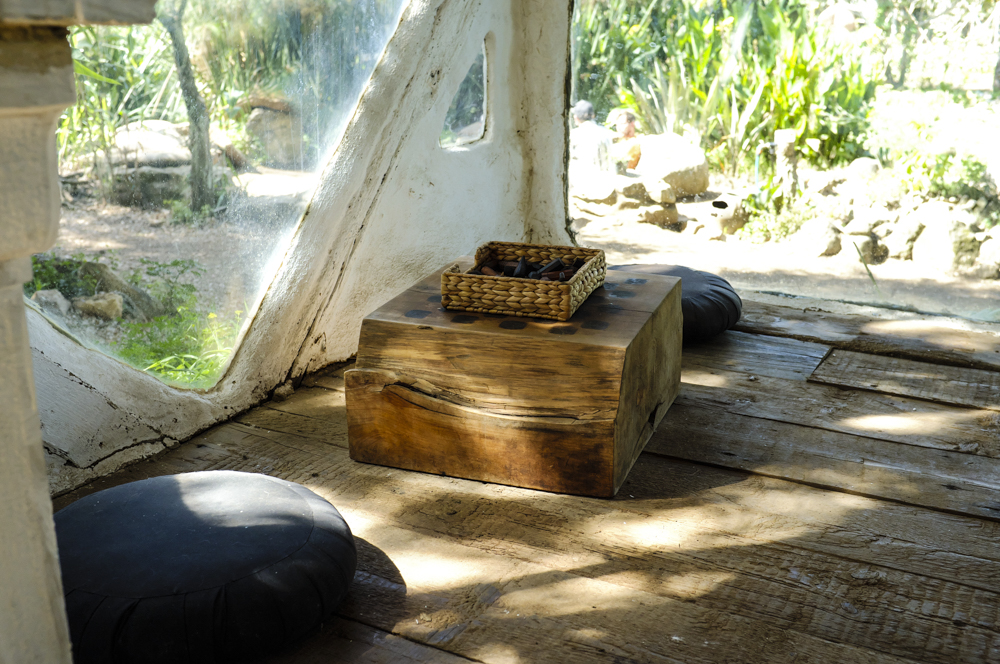


Pedro fondly describes every person who comes to Terra Alta as a “pollinator”. When asked about this, he smiled. “I have been studying beekeeping for a long time and, in reality, the bees are humankeeping. They are keeping us alive. So it’s quite arrogant from the perspective of a human being to say “I am beekeeping” because it’s actually the opposite. The bees are really a big source of inspiration to me. I am using the same pattern language because they are pollinating for life.”
He further expanded on the concept of pollination as a necessity for the survival of mankind. “We urgently need to become cultural. We need to regenerate culture. I say regenerate because what is being generated is wrong. We have a financial system dominating our laws. We are creating laws that are creating monocultures of the minds. There is a compression pattern in society that comes from the economic sphere which manipulates the legal sphere and then compresses culture to be equal. Pollination is an expansion pattern. In reality, economies—fraternal economies—should be in service. They should create a system that will equalise humans and nature. Because we need to protect nature. And the only way to protect nature is by creating laws that really defend nature, as they defend human beings. And then we will have a cultural release. We have an expansion—a cultural expansion—where we don’t necessarily need to have access to the same tomatoes and the same coffee seeds. Where diversity is working. So in pollination, diversity is welcome.”
On a side note, this concept of ‘monocultures of the minds’ that Pedro is so profoundly fascinated by stems from internationally acclaimed eco-activist, agro-ecologist and author Vandana Shiva.


Learning to Teach.
Teaching to Learn.
Anyone who has been a student at Terra Alta will quickly learn to realise that education here comes in many shapes and forms. “I am highly inspired by the world of movement and enjoy teaching creatively. Lectures, they are nice, but probably only about 10% is retained in a lecture. And I like giving lectures, but then after a while people also need a shot of coffee you know...” To make this approach more tangible, Pedro highlights his use of theatre as a means of conveying principles of beekeeping to his students. In his class, each student slips into the role of a different bee in the hive. The group then collectively re-enacts a one-year cycle in the life of a colony—one is a nurse, another the queen, the rest are foragers, workers, builders and drones. By slipping into these roles, students can comprehend hive activity in a very experiential way. This in turn allows them to retain much more information than they would have in a theoretical class.
In a similar approach, Pedro proceeds to lay out a biosphere using objects, prompting his students to come up with solutions based on cards that display the various Permaculture Principles. He utilises this approach to show the applicability of these principles to any geographical location. “I show that you can have an impact on the region where you are living. Although I often play with the global spheres by choosing regions that our visitors come from, I am still having an impact on this region. We are having an impact on this region. And it’s very important to acknowledge that we have the power to instigate change wherever we live. I might not be able to do much for China or India—unless it’s by being wiser in my consumption—but here I can talk with my mayor. I have an impact on my community.” Essentially, anyone who comes to Terra Alta leaves with knowledge and skills that they can take out into the world and apply elsewhere.


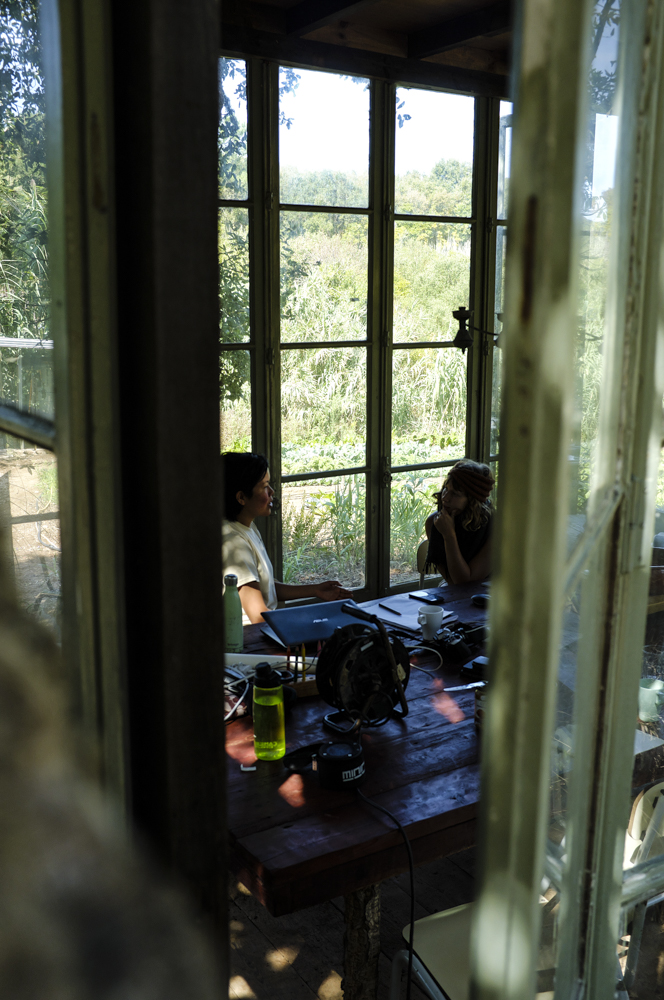
On Giving & Taking
Pedro underlines that one of the Permaculture Design Principles says that nature is always in cooperation—even the predator is not in competition with its prey. In that spirit, Terra Alta treats time as a currency to foster a collaborative environment in which the project and its participants benefit from each other equally. “There are multiple levels. For example, we have a currency with our volunteers. If you come here, you actually earn 8 Euros per hour in educational credits that you can transfer to people. We are really trying to break through traditional concepts and play with possibilities, because at the end of the day what we are giving each other is time. You and me and everybody else, we all have one thing in common: we are under the influence of time. We don’t have space in common, but we have time. And this is what we can trade. And time is being monetised. So time is not money. Because it doesn’t make sense to monetise what we all have in common. It doesn’t have value as it is being given to you. I realise that this is quite a philosophical approach, but what we all share at the end of the day is our precious sacred existence over a very short period of time. So when a volunteer, for instance, comes here and gives to the project, the project also gives back. And I believe that this is very important.”
I also spoke to some of the current volunteers to get a better understanding of their roles and involvement. It quickly became clear that many of these individuals yearn to see this collaborative culture manifest itself in the outside world. By exploring this way of sharing, learning, and co-existing together they are figuring out as a community how they want to lead their lives as individuals. They are all searching for new solutions, both for themselves and for society. And each has his or own story to tell.
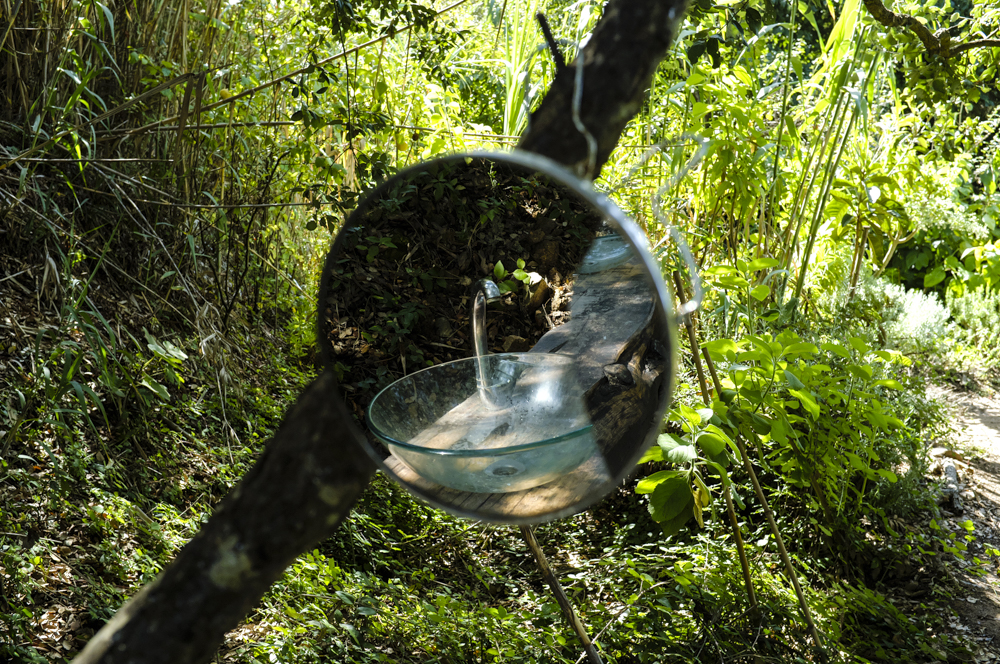

Michelle, a 21-year-old volunteer from Belgium, studied Permaculture at a college in Ireland. She joined Terra Alta to take the lead in caring for the project’s market gardens after working on Sea Shepherd for one-and-a-half years. She explains her motivation to come back on shore. “The only thing I missed at sea was working somewhere where it’s green. I really believe that activism—or active activism—like the kind Sea Shepherd is doing, is very much needed. But it’s also just tackling one problem. With Permaculture, on the other hand, you are engaging in passive activism and tackling a lot of problems simultaneously, like community living, food, and education.”
In a different example, US American and Hong Kong bi-national Nadia recently traded in a career in the commercial sphere for new terrains. Her hope? To align her passion for natural living and societal sustainability with her profession. Ever since, Nadia has been utilising her background in marketing and content creation to assist Terra Alta on numerous fronts. “There’s just so much inspiring content here. Somehow, there’s always a photographer around taking beautiful photos. This makes my life easy because previous jobs have always been difficult to produce content for. I love being in this environment. I can merge what I love doing, which is writing, with learning and helping.”
Meanwhile, Darby has been supporting Pedro in further developing their educational centre, while working to get Terra Alta’s new research centre up and running. The Melbourne-native delved into Permaculture in hopes of learning about natural building, lifecycle analysis, and education about culture. An Industrial Engineer by trade, he is especially eager to incorporate Permaculture Design Principles into constructions and spaces for people. Ideally at music festivals. “I always had this vision of working for high-value clients, making lots of money, and someday retiring and buying a little house with a garden. Being here, I’ve come to realise that I can actually do this today. I can go back to Australia, live on a friend’s land for close to nothing, build elements, build a community, and start teaching Permaculture. Basically, Terra Alta has helped me realign my mission and my vision rather than having this mixed up idea of what I want to be doing.”
In a nutshell, Terra Alta is living proof that we can rethink, redesign, re-envision the world we have created and are creating for ourselves. The question is, are we able and willing to break out of the monocultures that exist in our minds? Can we open ourselves up to patterns that promise a more diverse and sustainable future?
Header over to Terra Alta’s website to enroll in their programmes.
Read Chapter 8: Interview with Pedro on bttrstories.com
Text: Maia Frazier
Photography: Joël Ismail